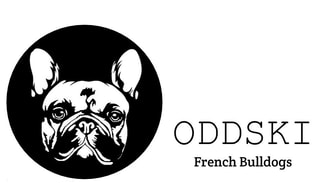French bulldog
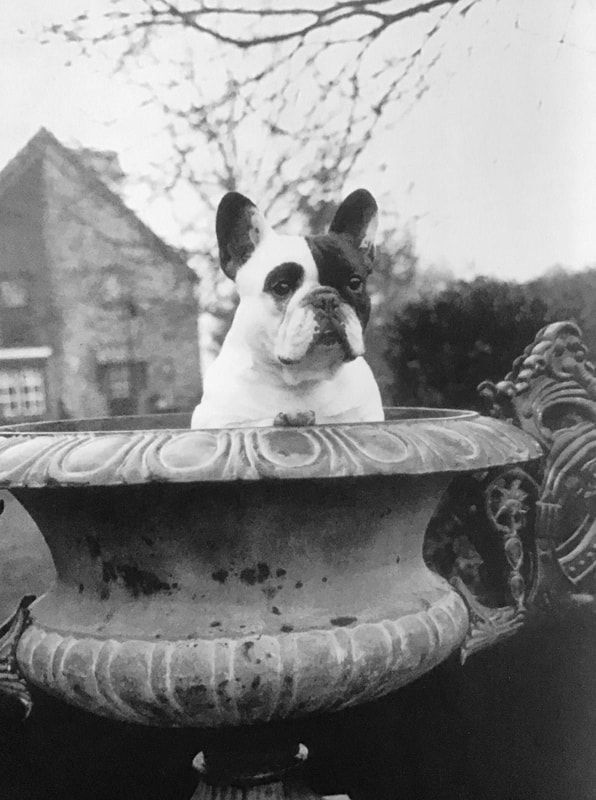
Last updated: 02 Dec 2015
Kennel Club, London 1994
Amended August 2015
Group: Group 7 (Non Sporting)
History:
General Appearance: Sturdy, compact, solid, small dog with good bone, short, smooth coat.
No point exaggerated, balance essential. Dogs showing respiratory
distress highly undesirable.
Characteristics: Full of courage, yet with clown-like qualities. Bat ears and short tail
characteristic features of the breed.
Temperament: Vivacious, deeply affectionate, intelligent.
Head And Skull: Head square in appearance and in proportion to dog’s size. Skull nearly
flat between ears, domed forehead. The skin covering the skull and
forehead should be supple enough to allow fine wrinkling when the dog
is alert. Well defined muzzle, broad, deep and set back, muscles of
cheeks well developed. Stop well defined. Lower jaw deep, square,
broad, slightly undershot and turned up. Nose black and wide, relatively
short, with open nostrils and line between well defined. Lips black, thick,
meeting each other in centre, completely hiding teeth. Upper lip covers
lower on each side with plenty of cushion, never so exaggerated as to
hang too much below level of lower jaw.
Kennel Club, London 1994
Amended August 2015
Group: Group 7 (Non Sporting)
History:
General Appearance: Sturdy, compact, solid, small dog with good bone, short, smooth coat.
No point exaggerated, balance essential. Dogs showing respiratory
distress highly undesirable.
Characteristics: Full of courage, yet with clown-like qualities. Bat ears and short tail
characteristic features of the breed.
Temperament: Vivacious, deeply affectionate, intelligent.
Head And Skull: Head square in appearance and in proportion to dog’s size. Skull nearly
flat between ears, domed forehead. The skin covering the skull and
forehead should be supple enough to allow fine wrinkling when the dog
is alert. Well defined muzzle, broad, deep and set back, muscles of
cheeks well developed. Stop well defined. Lower jaw deep, square,
broad, slightly undershot and turned up. Nose black and wide, relatively
short, with open nostrils and line between well defined. Lips black, thick,
meeting each other in centre, completely hiding teeth. Upper lip covers
lower on each side with plenty of cushion, never so exaggerated as to
hang too much below level of lower jaw.
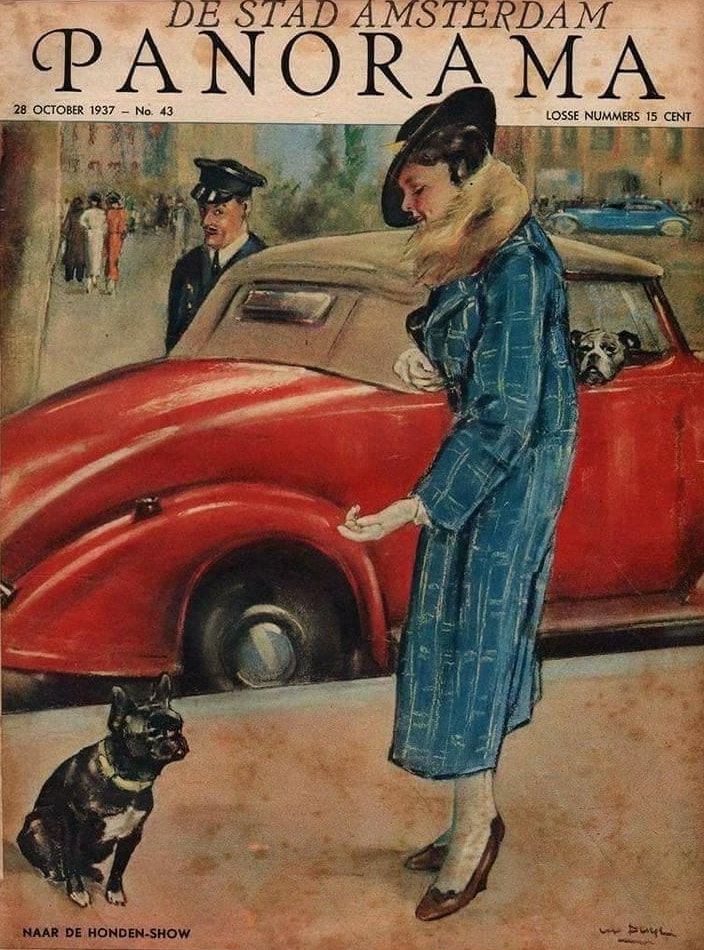
Eyes: Preferably dark and matching. Moderate size, round, neither sunken or
prominent, showing no white when looking straight forward; set
relatively wide apart and on the same level as the stop.
Ears: “Bat ears”, of medium size, wide at base, rounded at top; set high,
carried upright and parallel, a sufficient width of skull preventing them
being too close together; skin soft and fine, orifice as seen from the
front, showing entirely. The opening to the ear canal should be wide and
open.
Mouth: Slightly undershot. Teeth sound and regular, but not visible when the
mouth is closed. Tongue must not protrude.
Neck: Powerful, well-arched and thick, of moderate length.
Forequarters: Legs set wide apart, straight boned, strong, muscular and short.
Body: Cobby, muscular and well rounded with deep, wide brisket and ribs well
sprung. Strong, gently roached back. Good cut up. The body while
broader at the shoulders should narrow slightly beyond the ribs to give
definition to the relatively short, thick, strong, muscular loin.
Hindquarters: Legs strong, muscular and relatively longer than forelegs, with
moderate angulation. Absolute soundness essential. Hocks well let
down.
Feet: Small, compact and placed in continuation of line of leg, with absolutely
sound pasterns. Hind feet rather longer than the fore-feet. Toes
compact; well knuckled; nails short, thick and preferably black.
prominent, showing no white when looking straight forward; set
relatively wide apart and on the same level as the stop.
Ears: “Bat ears”, of medium size, wide at base, rounded at top; set high,
carried upright and parallel, a sufficient width of skull preventing them
being too close together; skin soft and fine, orifice as seen from the
front, showing entirely. The opening to the ear canal should be wide and
open.
Mouth: Slightly undershot. Teeth sound and regular, but not visible when the
mouth is closed. Tongue must not protrude.
Neck: Powerful, well-arched and thick, of moderate length.
Forequarters: Legs set wide apart, straight boned, strong, muscular and short.
Body: Cobby, muscular and well rounded with deep, wide brisket and ribs well
sprung. Strong, gently roached back. Good cut up. The body while
broader at the shoulders should narrow slightly beyond the ribs to give
definition to the relatively short, thick, strong, muscular loin.
Hindquarters: Legs strong, muscular and relatively longer than forelegs, with
moderate angulation. Absolute soundness essential. Hocks well let
down.
Feet: Small, compact and placed in continuation of line of leg, with absolutely
sound pasterns. Hind feet rather longer than the fore-feet. Toes
compact; well knuckled; nails short, thick and preferably black.
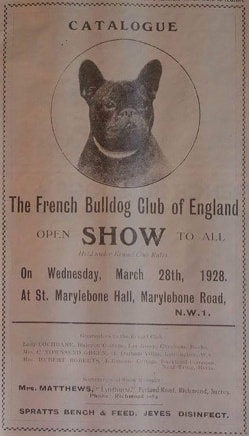
Tail: Undocked, short, set low. Thick at root, tapering quickly towards tip,
preferably straight and long enough to cover anus. Never curling over
back no carried gaily.
Gait/Movement: Free and flowing. Soundness of movement of the utmost importance.
Coat: Texture fine, smooth, lustrous, short and close.
Colour: The only correct colours are: Brindle; Fawn; Pied;
Brindle – Colour pattern caused by a mixture of black hairs and fawn
hairs. White markings permitted provided that brindle predominates.
Eye rims, eyelashes and lips black.
Fawn – Clear, self-coloured fawn with or without a black mask. White
markings permitted, provided that fawn predominates. Cream and red
shades less desirable. Eye rims, eyelashes and lips black.
Pied – Brindle Pied: White predominates with brindle patches. (The
brindle as defined above). Fawn Pied: White predominates with fawn
patches.
Whites are classified with pieds for show purposes.
In pieds, eye rims, eyelashes and lips should preferably be black.
Any white in the above colours should be clear with no ticking or spots.
All other colours highly undesirable, including solid black, black and
white, black and tan, mouse, grey/blue, liver/chocolate and all patterns
of these colours.
preferably straight and long enough to cover anus. Never curling over
back no carried gaily.
Gait/Movement: Free and flowing. Soundness of movement of the utmost importance.
Coat: Texture fine, smooth, lustrous, short and close.
Colour: The only correct colours are: Brindle; Fawn; Pied;
Brindle – Colour pattern caused by a mixture of black hairs and fawn
hairs. White markings permitted provided that brindle predominates.
Eye rims, eyelashes and lips black.
Fawn – Clear, self-coloured fawn with or without a black mask. White
markings permitted, provided that fawn predominates. Cream and red
shades less desirable. Eye rims, eyelashes and lips black.
Pied – Brindle Pied: White predominates with brindle patches. (The
brindle as defined above). Fawn Pied: White predominates with fawn
patches.
Whites are classified with pieds for show purposes.
In pieds, eye rims, eyelashes and lips should preferably be black.
Any white in the above colours should be clear with no ticking or spots.
All other colours highly undesirable, including solid black, black and
white, black and tan, mouse, grey/blue, liver/chocolate and all patterns
of these colours.
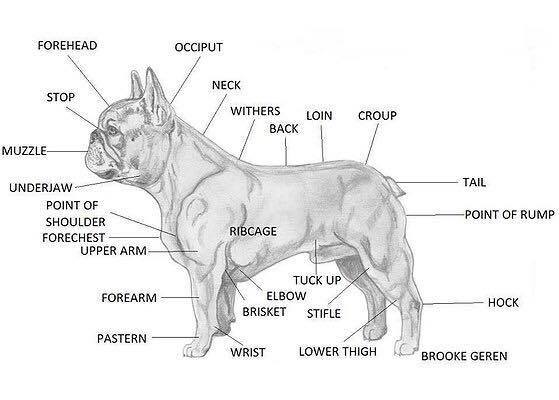
Sizes: Ideal weight:
Dogs 12.5 kgs (28 lbs)
Bitches 11 kgs (24 lbs)
Soundness not to be sacrificed to smallness.
Faults: Any departure from the foregoing points should be considered a fault
and the seriousness with which the fault should be regarded should be
in exact proportion to its degree and its effect upon the health and
welfare of the dog and on the dog's ability to perform its traditional
work.
Notes: Male animals should have two apparently normal testicles fully
descended into the scrotum.
Dogs 12.5 kgs (28 lbs)
Bitches 11 kgs (24 lbs)
Soundness not to be sacrificed to smallness.
Faults: Any departure from the foregoing points should be considered a fault
and the seriousness with which the fault should be regarded should be
in exact proportion to its degree and its effect upon the health and
welfare of the dog and on the dog's ability to perform its traditional
work.
Notes: Male animals should have two apparently normal testicles fully
descended into the scrotum.
Follow us!
